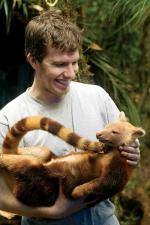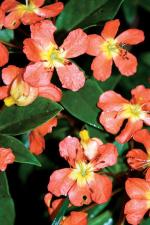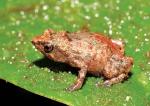Is this the last 'Lost World'?
 Evolutionary Biology Evolutionary Biology
A University of Adelaide researcher, as part of an international expedition, has discovered what could be the last 'Lost World' in a remote forest mountain region in the Indonesian province of Papua. An expedition to the uninhabited Foja range found exotic new species of frogs, mammals and birds, and a remarkable lack of fear in many animals they saw. Kristofer Helgen, a PhD student in the School of Earth and Environmental Sciences, was one of five western scientists in an international expedition to explore the most secluded mountain range of this remote and inaccessible region of West Papua. Mr Helgen's PhD is in the field of evolutionary biology, supervised by Professor Tim Flannery, Director of the South Australian Museum.
The expedition was led by Conservation International (CI) with a team of US, Indonesian and Australian scientists. "The scientific results of this expedition were stunning," said Mr Helgen. "It's not unusual in New Guinea to find new species, but to find them in such concentration is very rare. "The first bird I saw when I stepped out of the helicopter was a honeyeater with an orange face, which turned out to be a new species. This is the first new bird discovered on the island of New Guinea since the Second World War. "The other way this region was really striking is that the animals were relatively tame. They just didn't know what people were; they hadn't learned to be afraid. New Guinea has had human occupation for 50,000 years and there are very few areas that don't bear the stamp of subsistence hunting, even in these mountainous forest areas. "Some of these animals are normally incredibly skittish and you just don't see them, whereas we would see them regularly. There were forest wallabies which would hop around the camp by day." Mr Helgen said the 'Lost World' title had captured people's imagination but the significance of this expedition result was that it could well be the last discovery of this kind. "Rather than this being a 'Lost World', more truly it is a case of the world being lost everywhere else," he said. "Tens of thousands of years ago, so much of the world would have looked like this. This truly might be the last time this sort of discovery is made." He hoped that the publicity received by the expedition would help protect the region in the future from the inevitable pressure facing countries like Indonesia to log their interiors. "We all came to the conclusion that nothing ultimately is saved by leaving it be," he said. "We decided it was better to place it on a kind of pedestal and show everyone what it's like and hope that embeds it in people's minds that this is a place that needs to be saved." Story by Robyn Mills
|










